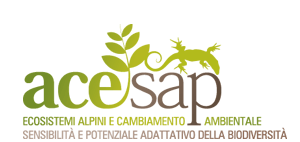| Chlorophytes and cyanobacteria are among the most typical algal groups, contributing to the aesthetic appearance and quality of the epilimnetic waters of the deep (251–410 m) and large (6.5–49×10^9 m^3) lakes located on the southern edge of the Alps (from oligo-mesotrophy to meso-eutrophy: Maggiore, Garda, Como, Iseo and Lugano). The results obtained from monthly surveys carried out in the largest of these lakes (Garda) have been reported in detail. The thermal stability of the water column and silica depletion were the main factors responsible for the decline of the great spring diatoms. The successive growth of Mougeotia sp. was favoured by its lower sinking velocity and resistance to the increasing grazing pressure. During summer, the maximum stability of the water column, with high vertical nutrient concentration gradients, determined a major algal differentiation with a typical increase, among others, of Chlorococcales at the surface and metalimnetic stratification of various Oscillatoriales. The development of oligotrophic blooms, caused by a rapid thickening at the surface of Anabaena in the eastern, sheltered basin, was also discussed in light of the trophic characterisation of Lake Garda. From autumn to spring, the decreasing light, the increasing mixing depth and nutrient availability favoured a progressive dominance of vertical homogeneous populations of Planktothrix (autumn) and colonial diatoms. The same functional groups of chlorophytes and cyanobacteria have been recognised in the studies published so far on the phytoplankton of deep southern subalpine lakes. In this respect, their morphometric and physical properties appear to constitute a sort of standardising factor, reducing the range of possible dominants. With increasing TP concentrations and biomass, filaments of Planktothrix and Planktolyngbya, along with the Chlorococcales, became important. The dominance of Mougeotia (one of the most characteristic features of these large lakes) appears restricted to a medium trophic range, whereas the distribution of the Chroococcales and other filaments ascribed to Pseudanabaena and/or Limnothrix is more irregular. The conspicuous presence of Aphanizomenon in Lake Lugano is typical and characteristic of a more productive lake. Among the Nostocales, a clear interpretation of the Anabaena blooms in lakes Garda and Iseo is complicated by the peculiar behaviour of filaments concentrating at the surface, which is apparently restricted, within the medium trophic range, to stable water columns. |






